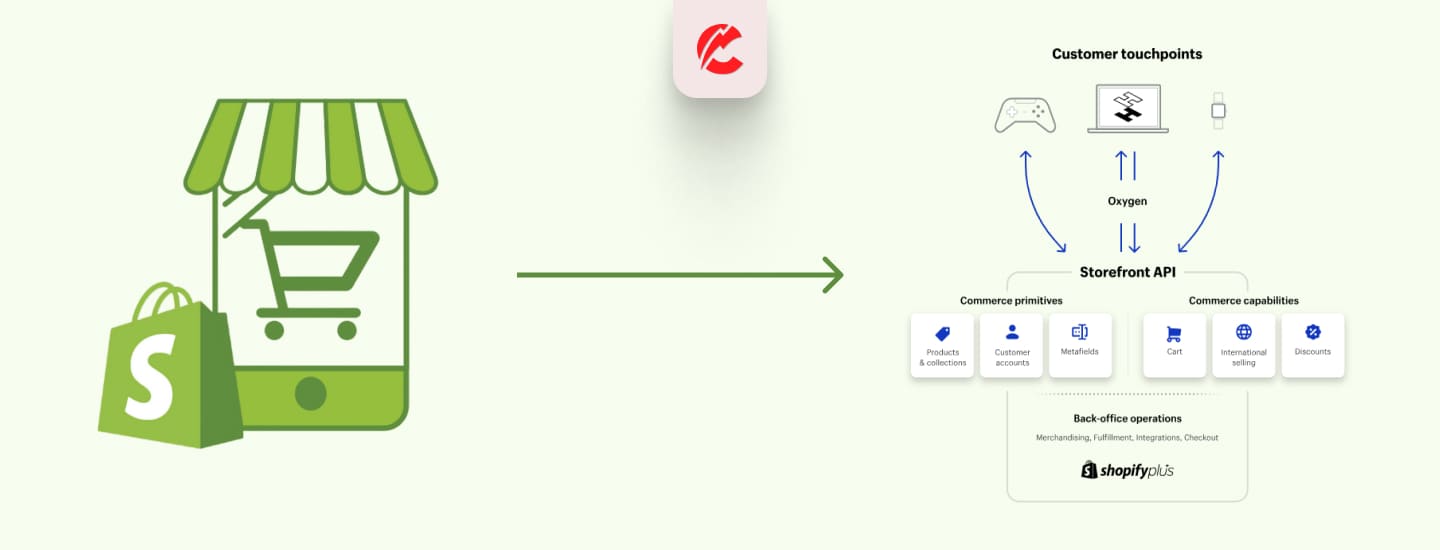Shopify Headless Architecture: Is It Right for Your Business?
As eCommerce continues to evolve, so do the technologies powering it. One approach that has gained significant traction is headless architecture, where the frontend (what customers see) is decoupled from the backend (where business logic and data live). Shopify, a leader in eCommerce platforms, fully supports headless architecture, enabling businesses to create unique, high-performance online stores.
But is Shopify’s headless architecture the right choice for your business? Let’s explore the benefits, challenges, and considerations to help you decide.
What is Shopify Headless Architecture?
In a traditional eCommerce setup, the frontend (user interface) and backend (data management, business logic) are tightly integrated. In contrast, Shopify’s headless architecture decouples the two, allowing businesses to use Shopify for backend functionality while building custom frontends using frameworks like React, Vue.js, or Angular.
Benefits of Shopify Headless Architecture
1. Unlimited Design Flexibility
Headless architecture allows you to create a completely custom user interface that aligns with your brand identity, free from the constraints of Shopify’s themes.
2. Omnichannel Experiences
Deliver consistent content and shopping experiences across multiple channels—websites, mobile apps, IoT devices, and even in-store displays.
3. Improved Performance
Custom-built frontends optimized for speed and responsiveness enhance site performance and user experience.
4. Scalable Solutions
Scale specific components of your eCommerce system independently, ensuring high performance during peak traffic periods.
5. Seamless Integrations
Easily integrate with third-party tools, APIs, and custom applications for a tailored eCommerce ecosystem.
Challenges of Shopify Headless Architecture
1. Technical Expertise Required
Headless architecture requires skilled developers to build and maintain the custom frontend and integrations.
2. Higher Initial Costs
Developing a headless storefront involves higher upfront investment compared to using Shopify’s pre-built themes.
3. Longer Development Time
Building a custom frontend and ensuring seamless backend integration takes more time.
4. Maintenance Complexity
Managing two separate systems (frontend and backend) can increase the complexity of updates and maintenance.
Is Shopify Headless Architecture Right for Your Business?
Headless Architecture is Ideal If You:
- Require complete control over your storefront design and user experience.
- Operate across multiple channels and need consistent omnichannel experiences.
- Anticipate high traffic and require scalable, high-performance solutions.
- Have a dedicated development team or are willing to invest in technical resources.
Stick to Traditional Shopify Setup If You:
- Prefer a cost-effective, out-of-the-box solution.
- Are a small to medium-sized business with limited technical expertise.
- Need to launch quickly without extensive customization.
How CommerceBolt Can Help
At CommerceBolt, we help businesses unlock the full potential of Shopify’s headless architecture by:
- Consulting: Assessing your business needs to determine if headless is the right fit.
- Custom Development: Building responsive, high-performance frontends tailored to your brand.
- Integration Services: Connecting your Shopify backend with APIs, third-party tools, and custom applications.
- Maintenance and Support: Ensuring your headless architecture runs smoothly and scales with your business.
Conclusion
Shopify’s headless architecture offers unparalleled flexibility, scalability, and customization for businesses ready to invest in creating unique, cutting-edge eCommerce experiences. While it comes with added complexity and costs, the long-term benefits often outweigh these challenges for growing businesses.
Unsure if Shopify headless architecture is right for your business? Contact CommerceBolt today for expert guidance and tailored solutions!













